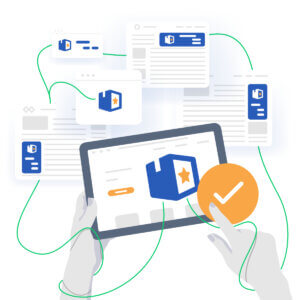
Getting people to visit your website is only half the battle – converting them into paying customers is where the real work begins. That’s why it’s essential to understand and support your audience through each stage of the customer buying journey.
We work with businesses every day to improve digital strategies that drive better results. One of the most effective ways to boost conversions? Aligning your marketing with the natural flow of the consumer buying journey, from first click to final purchase.
1. See Things From the Customer’s Point of View
Before you can improve conversions, you need to understand how your customers actually make decisions. The typical consumer buying journey breaks down into three basic stages:
- Awareness: They realize they have a problem or need.
- Consideration: They start looking into options to solve that problem.
- Decision: They choose a solution and take action.
If you can identify what your audience is thinking, feeling, or searching for at each of these stages, you’ll have a much better shot at guiding them toward a purchase. It’s not just about selling, it’s about helping them find the right answer.
2. Match Your Content to Where They Are in the Journey
Different stages call for different types of content. Someone who just discovered your brand isn’t ready for a hard sales pitch, but someone who’s been comparing your product with a competitor probably is.
Here’s a quick breakdown:
- Awareness stage: Focus on educational content like blog posts, how-to guides, or social media that helps people understand their challenge or need.
- Consideration stage: This is where you can bring in product comparisons, case studies, or videos that show off your solution in action.
- Decision stage: Now’s the time for clear calls to action, limited-time offers, or testimonials that give people the confidence to buy.
The better you can match your message to the moment, the more likely people are to take the next step.

3. Keep the Conversation Going with Automation and Retargeting
Not everyone is going to convert on the first visit, and that’s perfectly fine. That doesn’t mean the opportunity is lost.
Tools like email automation and retargeting ads can help you stay in touch with people who showed interest but didn’t act right away. A simple follow-up email, a helpful tip, or even a reminder about an item left in their cart can make all the difference.
The idea here is to stay visible and helpful without being pushy. A little nudge at the right time can go a long way.
4. Test, Learn, and Improve
One of the best things about digital marketing is that it’s measurable. If something isn’t working, you don’t have to guess why – you can test it.
Try running A/B tests on different subject lines, landing page headlines, or button text. Look at your data to see where people drop off in the journey. And keep an eye on which types of content actually lead to conversions.
This kind of ongoing testing and fine-tuning can help you make smarter decisions and get better results over time.
Meet Your Customers Where They Are
The consumer buying journey is rarely straightforward, but when your marketing speaks to the right people at the right time, conversions follow naturally. By creating content that aligns with each stage, staying engaged through automation, and continuously improving based on data, you’ll not only boost sales, you’ll build stronger relationships. Whether you’re looking to fine-tune your funnel or build a conversion-focused strategy from the ground up, we’re here to help.